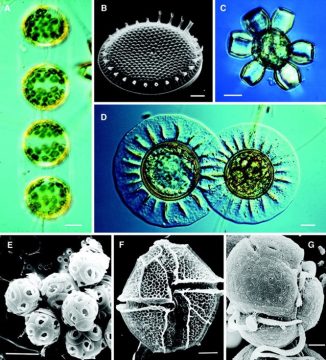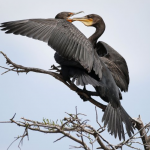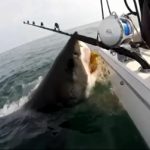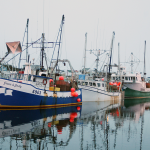Tag Archives: phytoplankton

Is seismic testing to blame for disappearing plankton? This scientist says it’s possible
Scientists have noticed a mysterious population crash in some of the Atlantic Ocean’s tiniest and most important species, and a Halifax biologist says oil and gas exploration may be to blame.,,, The tiny organisms are disappearing from Newfoundland and Labrador’s waters, and Lindy Weilgart says blasts from seismic air guns have been shown to wipe them out.,,, On the other side of the world, Australian scientists first found that testing with seismic air guns destroys plankton a few years ago, >click to read< 21:18

The phytoplankton decline, is there anything to it?
We have been told that the phytoplankton population is declining rapidly around the world and, of course, the cause is climate change. Phytoplankton is the base of the ocean food chain and it accounts for about half of global primary productivity or organic matter creation (Boyce, Lewis and Worm 2010). Phytoplankton is the major consumer of carbon dioxide, the dreaded demon trace gas, and the major producer of oxygen. So, first question, is the estimated decline in phytoplankton accurate, significant or unusual? Second question, if the decline is real, are the measurements long term enough to show it is not a natural occurrence? What is the natural variability and how do we know man-made climate change is to blame? Let’s investigate this. >click to read< 12:10
Healthy parents provide clues to survival of young haddock on Georges Bank
 In 2003, haddock on Georges Bank experienced the largest baby boom ever documented for the stock, with an estimated 800 million new young fish entering the population. With typical annual averages of 50 to 100 million new fish in the last few decades, fisheries biologists have been puzzled by the huge increase and its ramifications for stock management. They have been looking for answers and may have found one – healthy adults. Read more here 16:18
In 2003, haddock on Georges Bank experienced the largest baby boom ever documented for the stock, with an estimated 800 million new young fish entering the population. With typical annual averages of 50 to 100 million new fish in the last few decades, fisheries biologists have been puzzled by the huge increase and its ramifications for stock management. They have been looking for answers and may have found one – healthy adults. Read more here 16:18
Climate Change Forces Reevaluation of Fishery Management. (Isn’t that right, John?)
Scientists now think that altered zooplankton populations may be one reason cod stocks haven’t rebounded as quickly as expected. In addition, water temperatures in southern New England are getting uncomfortably warm for cod. So they’re moving northward and offshore in search of cooler water.. And they’re not alone. Over the past fifty years, more than half of all commercially exploited species have responded to warming waters by changing where they live. That includes the fish that used to fill Eldredge’s weir. Read [email protected] 21:57
Weak link in the food chain – Most marine life relies on a regular and ongoing supply of phytoplankton.
 These microscopic marine plants lie at the base of the marine food chain and form the staple diet of minute ocean creatures called zooplankton. Without enough zooplankton in the seas, most marine life would not survive. Geo-engineering/ Reefs threat/ Future prospects [email protected] 13:09
These microscopic marine plants lie at the base of the marine food chain and form the staple diet of minute ocean creatures called zooplankton. Without enough zooplankton in the seas, most marine life would not survive. Geo-engineering/ Reefs threat/ Future prospects [email protected] 13:09
Climate change could be affected by changing phytoplankton – Mridul Thomas MSU
In the current issue of Science Express, Michigan State University researchers show that by the end of the 21st century, warmer oceans will cause populations of these marine microorganisms to thrive near the poles and may shrink in equatorial waters. Since phytoplankton play a key role in the food chain and the world’s cycles of carbon, nitrogen, phosphorous and other elements, a drastic drop could have measurable consequences.http://fis.com/fis/worldnews/worldnews.asp?l=e&ndb=1&id=56428
Massive fish kill continues in the Neuse River By Eddie Fitzgerald, Sun Journal Staff NewBern, North Carolina
A massive fish kill on theNeuseRiver that has been ongoing for nearly a month has resulted in thousands of menhaden washed up on beaches nearNeuseHarbor. Mitch Blake, Neuse Riverkeeper, viewed the area Tuesday afternoon, saying there were several hundred thousand dead fish washed up on the beach and in the river. For 21 days, mostly Atlantic menhaden have been dying over a large portion of the river fromNew Bernto Hancock Creek, Blake said in an email. Some of the dead menhaden have ulcers that National Oceanic and Atmospheric Administration officials have identified as Aphanomyces invadans from six samples analyzed in Beaufort.
http://www.newbernsj.com/news/local/massive-fish-kill-continues-in-the-neuse-river-1.31744















































